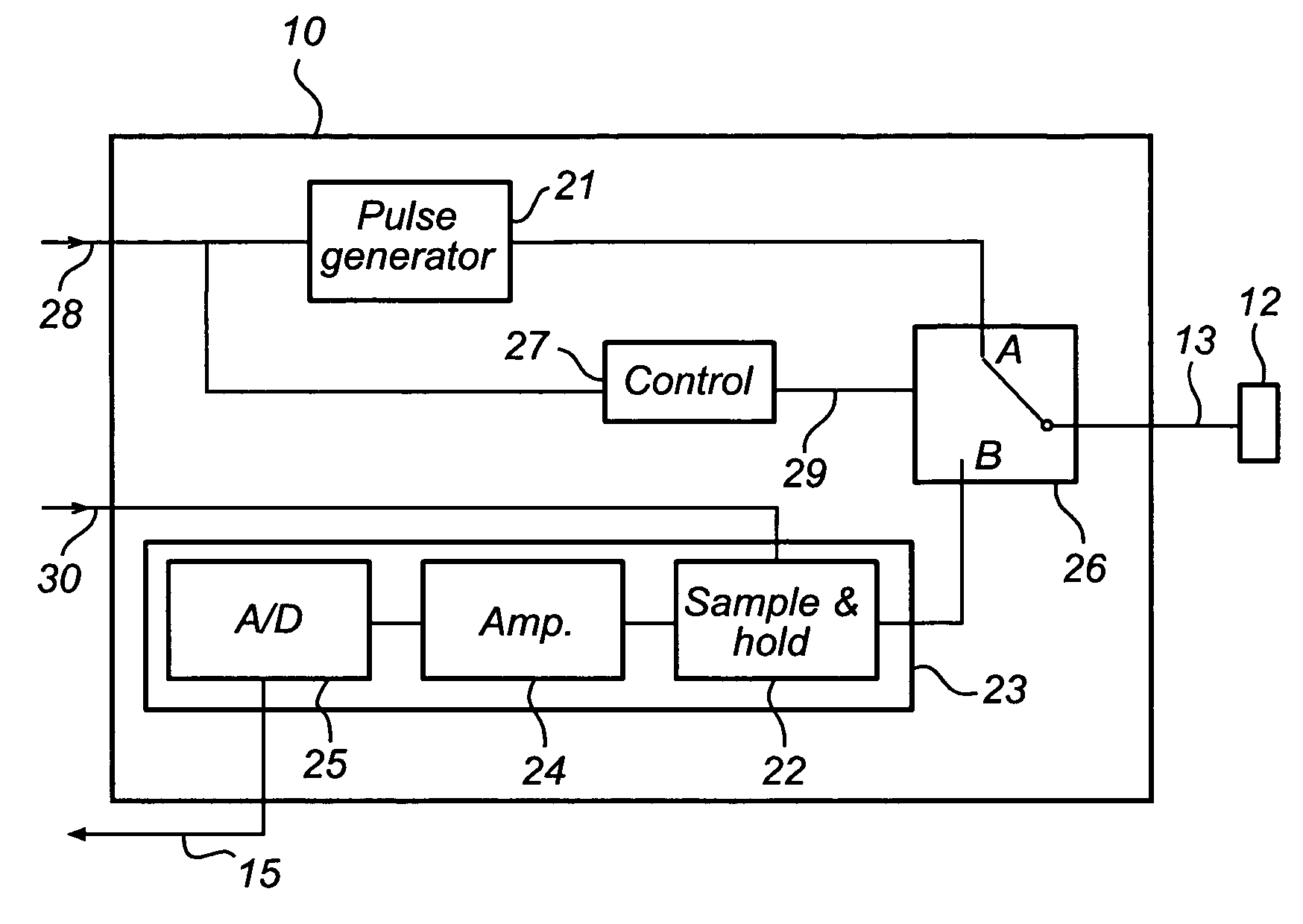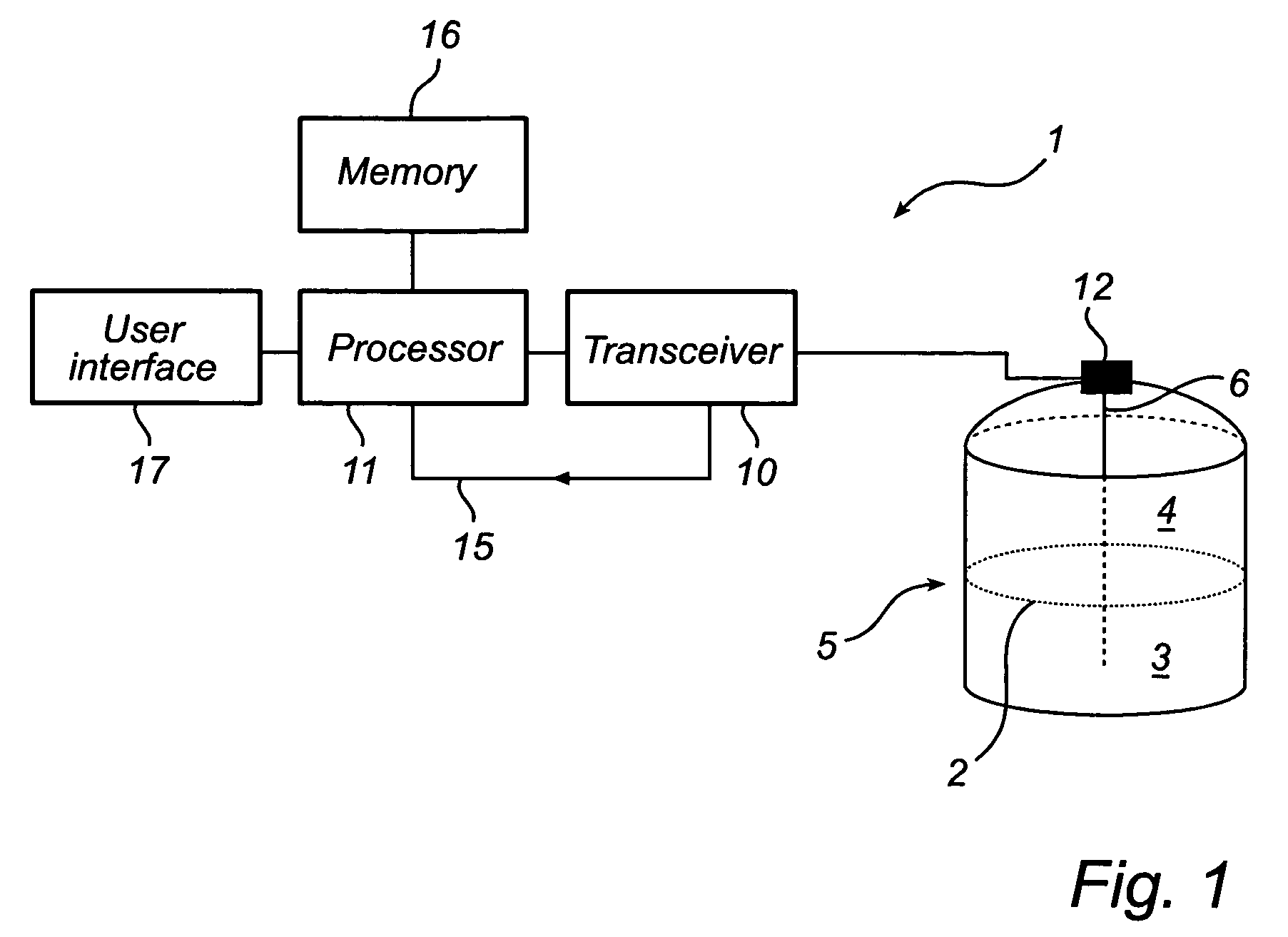Radar level gauge with switch for selecting transmitter or receiver mode
a technology of radar level gauge and switch, which is applied in the direction of using reradiation, radio wave reradiation/reflection, measurement devices, etc., can solve the problems of degrading the sensitivity of the system, limited directional couplers, and high cost, and achieve the effect of improving the sensitivity of pulsed radar level gauge systems at cost efficient rates
- Summary
- Abstract
- Description
- Claims
- Application Information
AI Technical Summary
Benefits of technology
Problems solved by technology
Method used
Image
Examples
Embodiment Construction
[0025]FIG. 1 shows schematically a radar level gauge (RLG) system 1 in which a method according to the invention may be advantageously used. The system 1 is arranged to perform measurements of a process variable in a tank, such as the level of an interface 2 between two (or more) materials 3, 4 in the tank 5. Typically, the first material 3 is a content stored in the tank, e.g. a liquid such as gasoline, while the second material 4 is air or some other atmosphere. In that case, the RLG will enable detection of the level of the surface of the content in the tank. Note that different tank contents have different impedance, and that the electromagnetic waves will not propagate through any material in the tank. Typically, therefore, only the level of a first liquid surface is measured, or a second liquid surface if the first liquid is sufficiently transparent.
[0026]The system 1 comprises a transceiver 10, controlled by a processor 11 to transmit electromagnetic signals to a signal mediu...
PUM
 Login to View More
Login to View More Abstract
Description
Claims
Application Information
 Login to View More
Login to View More - R&D
- Intellectual Property
- Life Sciences
- Materials
- Tech Scout
- Unparalleled Data Quality
- Higher Quality Content
- 60% Fewer Hallucinations
Browse by: Latest US Patents, China's latest patents, Technical Efficacy Thesaurus, Application Domain, Technology Topic, Popular Technical Reports.
© 2025 PatSnap. All rights reserved.Legal|Privacy policy|Modern Slavery Act Transparency Statement|Sitemap|About US| Contact US: help@patsnap.com



